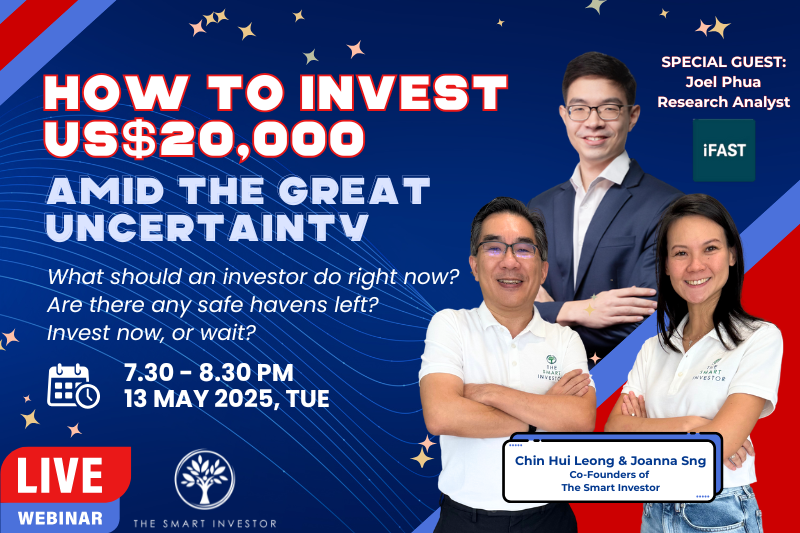The global economy is at an inflection point.
With interest rates slated to continue rising, stock prices have taken a hit due to lower valuations.
As share prices decrease, bonds are starting to emerge as an asset class of choice because coupon rates tend to rise in tandem with interest rates.
Before diving deeper as to why bonds are favoured in a rising interest rate environment, let’s first tackle some basic definitions and concepts for bonds.
Bond basics
Corporations that issue bonds are essentially borrowers, and investors who buy these bonds are lenders (also known as “bondholders”).
Here is an explainer for the key terms used for bonds.
The par value of a bond refers to the amount that investors receive when a bond matures.
This is different from its market value, which is the price at which a bond is traded.
Most bonds, apart from zero-coupon ones, pay interest in the form of coupons.
These coupons have a payment frequency of either monthly, quarterly, semi-annually, or annually.
A bond’s yield is calculated by dividing its coupon rate by its par value.
Apart from receiving a stream of regular cash inflows through coupon payments, bondholders can profit through capital appreciation when the price of a bond increases due to interest rate movements.
Here is an important point to remember: bond prices move inversely with yields.
Simply put, when bond yields fall, bond prices will rise.
The opposite holds true as well.
As interest rates rise, newly-issued bonds pay higher coupons than older bonds.
Investors holding bonds which were issued earlier will receive lower coupon payments than those who hold more recently-issued bonds.
Therefore, the prices of older bonds have to fall to compensate investors for this lower yield.
Next, we discuss the merits of including bonds within your portfolio, as well as highlight characteristics that differentiate them from other investment options such as dividend paying stocks.
Diversification
Over the past two decades, stock and bond prices have moved in opposite directions of each other.
During times of stock market turmoil, having some bonds in a portfolio can help investors cushion their stock losses.
In fact, a portfolio composed of stocks and bonds in a 60%/40% proportion has historically generated a positive return after a turbulent year.
Proof of this occurred in 1975 and 2009, which were years following the dismal market performance of 1974 and 2008, respectively.
In both cases, the 60/40 portfolio returned 28% and 18% respectively.
2022 was a painful year as both the stock and bond markets declined.
Constructing a 60/40 portfolio in 2023 might be alluring if you believe that history will repeat itself.
Liquidation preference
Bonds are less risky than stocks because of liquidation preference.
Liquidation preference is a concept that determines which investors get paid first, and how much they get paid if a company goes bankrupt.
There are typically two types of investors in a company: debt and equity investors.
These two types of investors contribute capital by buying a company’s bonds or stock.
The capital is required by the company to maintain operations and fuel growth.
If a company goes bust, bondholders will receive their monies before equity holders.
This, in turn, means that bond investors undertake less risk.
Based on the relationship governing risk and returns, the lower risk that bond investors are exposed to means their returns also tend to be lower than that of stocks.
Take a REIT for example.
If the REIT somehow defaults on its payment obligations and becomes insolvent, then REIT investors can only recoup their monies after the bondholders of the REIT get paid.
Bankruptcy of REITs or blue chip companies may sound far-fetched to some investors but as recently as December 2021, Eagle Hospitality REIT (SGX: LIW) filed for liquidation and dissolved its entities.
As a result, unitholders were warned that they may not receive any distribution post-liquidation.
Cash flow certainty
Coupons are fixed when a bond is issued.
Bondholders lock in a yield when subscribing to a bond, which provides them with assurance that they will receive a stipulated amount of cash at a fixed, predetermined interval.
Contrast this with owners of blue chip stocks and REITs.
Dividend payments and share buybacks are conducted at management’s discretion.
Singapore implemented a circuit breaker in 2020 which adversely affected numerous companies, even the robust ones in the banking, real estate, and telecommunication sectors.
The consequence was a dividend reduction to the tune of US$600 million for 2020 compared to the prior year.
Therefore, bonds provide cash flow predictability which is a trait that some income-seeking investors prefer.
Given the current macroeconomic backdrop, it is likely that inflation will remain elevated even if it has already peaked in 2022.
Interest rates are projected to increase and stay at higher levels.
These conditions point to slower growth ahead compared to what the world was used to during periods of zero or low rates.
As a result, dividend yields have declined while bond yields are gradually pulled upwards by higher interest rates.
Even if investors are not convinced by a rosier bond outlook, their addition into a portfolio nevertheless helps mitigate risks by diversifying the portfolio to include different asset classes.
Our team has spent decades scouring SGX for stocks. And we think dividends could be the answer to rising inflation and market uncertainty in 2023. With our newest FREE report, you’ll have everything you need to find, keep and make more money from dividend stocks. Click here to download it for free.
Follow us on Facebook and Telegram for the latest investing news and analyses!
Disclosure: Tan Ke Xuan does not own shares in any of the companies mentioned.




